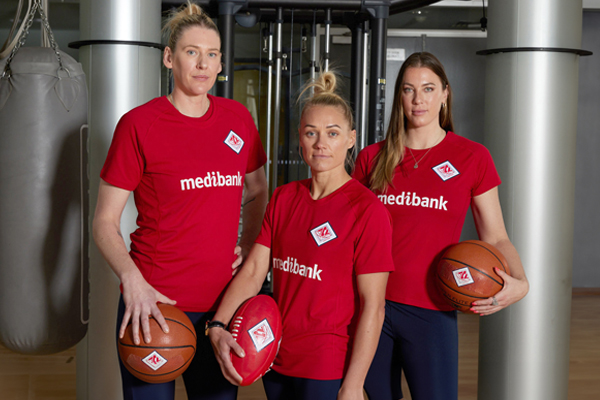-
With plenty of running events coming up on the calendar, the choice is yours – fun run, short, middle, long or ultra distance, trail, triathlon, road, local, international, obstacle, extreme, altitude, desert, snow or beach.
Whichever you choose to work towards, each challenge requires a tailored training program to avoid injury and maximise performance.
To prepare for an ambitious event, you’ll need a progressive training plan that incorporates distance, terrain, equipment, elevation, intensity, environmental factors and the training time frame. All this will help make sure you are in peak condition by the time of the event to achieve your race target.
However, you also need to be careful of increasing your training load too heavily, or changing up your training environment too drastically, without prior conditioning. Going too hard, too soon, can increase your risk of getting injured and losing momentum.
10 ways to reach your running goals


-
"You’ll need a training plan to help make sure you are in peak condition by the time of the event."
How to prevent running injuries
Sports injuries are commonly caused by either an underlying musculoskeletal weakness, or a biomechanical dysfunction leading to excessive load of bone or tissue.
This can occur locally or be referred to adjacent anatomical structures. In other words, the weakness of a muscle or muscle group (eg the posterior chain) can cause overuse of soft tissue structures (tendon, muscle or fascia) or create stress on a related bone or joint.
In order to reduce the likelihood of injury as well as improve performance, it’s recommended to follow a ‘building’ program for 6-12 weeks before you start your official training. This pre-event training is focused on fundamentally strengthening, conditioning and improving your technique.
To get started, it’s advisable to have a consultation with an experienced sports physiotherapist or sports podiatrist to assess your muscle strength, running technique, biomechanics and footwear.
Discuss your goals with your practitioner and they will prescribe ‘homework’ to ensure your body is firing on all cylinders and appropriately conditioned to safely progress your training load.
"Choose an event that challenges you, but isn’t an over commitment for your body or life."
10 tips for better running
1. Don’t ignore pain
Red flag symptoms that could indicate significant injury include night pain, swelling (particularly pitting oedema – when you press down on the area with a finger and the indentation remains after the pressure is removed) and/or inability to bear weight. These symptoms require immediate assessment by a musculoskeletal specialist and are your cue to stop exercising until a diagnosis and management plan is in place.
2. Listen to your body
If you are feeling consistently tight or sore in one area, it may to be a vulnerable or high stress location that is likely to require more attention than stretching. Visit a health professional for assessment and management.
3. Track your pace and distance
The golden rule for increasing training load is 10% increase per week – and don’t work on distance and pace in the same run.
4. Get connected
Use apps to help you track your mileage, elevation and pace. Study your stats and weekly progressions to see how you’re tracking against your goals.
"The golden rule for increasing training load is 10% increase per week – and don’t work on distance and pace in the same run."
5. Make sure you have the right shoes
A change to your usual training may require a new style of footwear, or you might need to ‘turn over’ your shoes more often as you clock up more mileage. A second pair may be worth considering. Always seek fitting and prescription advice from a reputable running shoe store or sports podiatrist. Here are a few things to keep in mind when buying running shoes.
6. Don’t bite off more than you can chew
Choose an event that challenges you, but isn’t an over commitment for your body or life. It’s a good idea to build up your events so you are starting with a base level of fitness. For example, start with 10 km, then half marathon, full marathon etc.
7. Schedule times to train that fit with your life
This helps make training enjoyable, not a chore. Morning or lunchtime runs are invigorating and have many physiological effects that last the entire day.
"Schedule times to train that fit with your life. This helps make training enjoyable, not a chore."
8. Don't try to overcompensate
Don’t fast-track your training program to make up for missed sessions. If you have had more than two weeks off, rewind your program the same number of weeks.
9. Know the event details
Is there a reasonable amount of time to train for it? What is the elevation? Do you need to carry a pack? If so, what do you need to carry? Is there a ‘cutoff’ duration it must be completed in? What season is it? What is the terrain? The answers to these questions will guide your training plan so you are optimally conditioned.
10. Read blogs for tips, tricks and motivation
Check out the event website and search for running blogs to arm yourself with knowledge and inspiration. Also, most events supply a generic training program (but note that these assume you have undertaken your ‘pre-training’ program first). If you want more guidance, seek help from a running coach.
-
Everything you need to know about parkrun
Been wondering what a parkrun looks like? Where do you go? What do you do? How do you sign up? Find out here.
-
Five ways to exercise when on a budget
You don’t need to spend money on gym memberships just to meet your fitness goals. Here are five free ways to stay healthy and active when you’re living on a budget.
-
How parkrun changed my life
Christie Farrow went from being an exercise-phobe to a true blue runner with parkrun.
-
Australia's top female athletes unite on ACL injury
Some of Australia's most talented athletes have joined forces to highlight the unique injury challenges women face.
-
How to create your perfect summer fitness plan
Be inspired by the sunshine and get moving
-
The essential foam rolling routine
Improve posture and flexibility with this essential foam rolling routine. Discover effective stretches to ease muscle tightness and enhance your daily movement.
Subscribe to receive the best from Live Better every week. Healthy recipes, exercise tips and activities, offers and promotions – everything to help you eat, move and feel better.
By clicking sign up I understand and agree to Medibank's privacy policy






